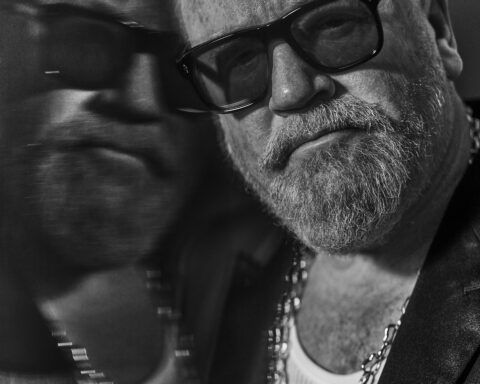Nick Reed is optimistic – but cautiously.
That’s why, after a long career high up in the inner sanctum of menswear, he took a gallant leap — leaving it all behind to found Neem: a clothing line that puts the planet first.
Under his direction, Neem is a brand committed to creating clothing that is accountable to our planet, from “farm to grave” as Reed explains. This means, minimizing carbon emissions from the moment the grains to create the fibers are planted, to when a consumer is done with their shirt jacket or trousers; whether it’s next life is being resold, recycled, or repurposed.
But don’t call it sustainable, he says.
That’s because sustainability is too amorphous a word to explain what Reed and his team do — and doesn’t fully encapsulate why they do it.
“[The word sustainable]… it has no definition,” says Reed, joining me via Zoom. The menswear mogul and I spent hours over the course of a few months unpacking what it really means to make, sell, and wear clothing responsibly. “The word sustainable is too vague and isn’t clear or defined.”
Nick is perfectly disheveled in the posh way that only effortlessly stylish British men can be; handsome and immediately disarming. Despite his prominence in the austere world of menswear, he has a dry humorous charm that immediately signals a lack of pretense. And it’s that relaxed, approachable, but classy appeal that marks the Neem brand and their wares.
Reed is so passionate about what he does at Neem having seen it all, and then some, in his years traveling the world sourcing textiles, buying for large retailers, and turning multi-million dollar profits for UK and US’ biggest brands. And what he’s built with Neem is, on its face, a high quality brand creating timeless wardrobe staples.
But it’s critical to get in the weeds (so to speak) about what it is that Neem is doing differently. It serves both as an exemplary blueprint for other brands, and as a mirror to an industry that has been ravaged by excess, and indifference to its environmental impact.
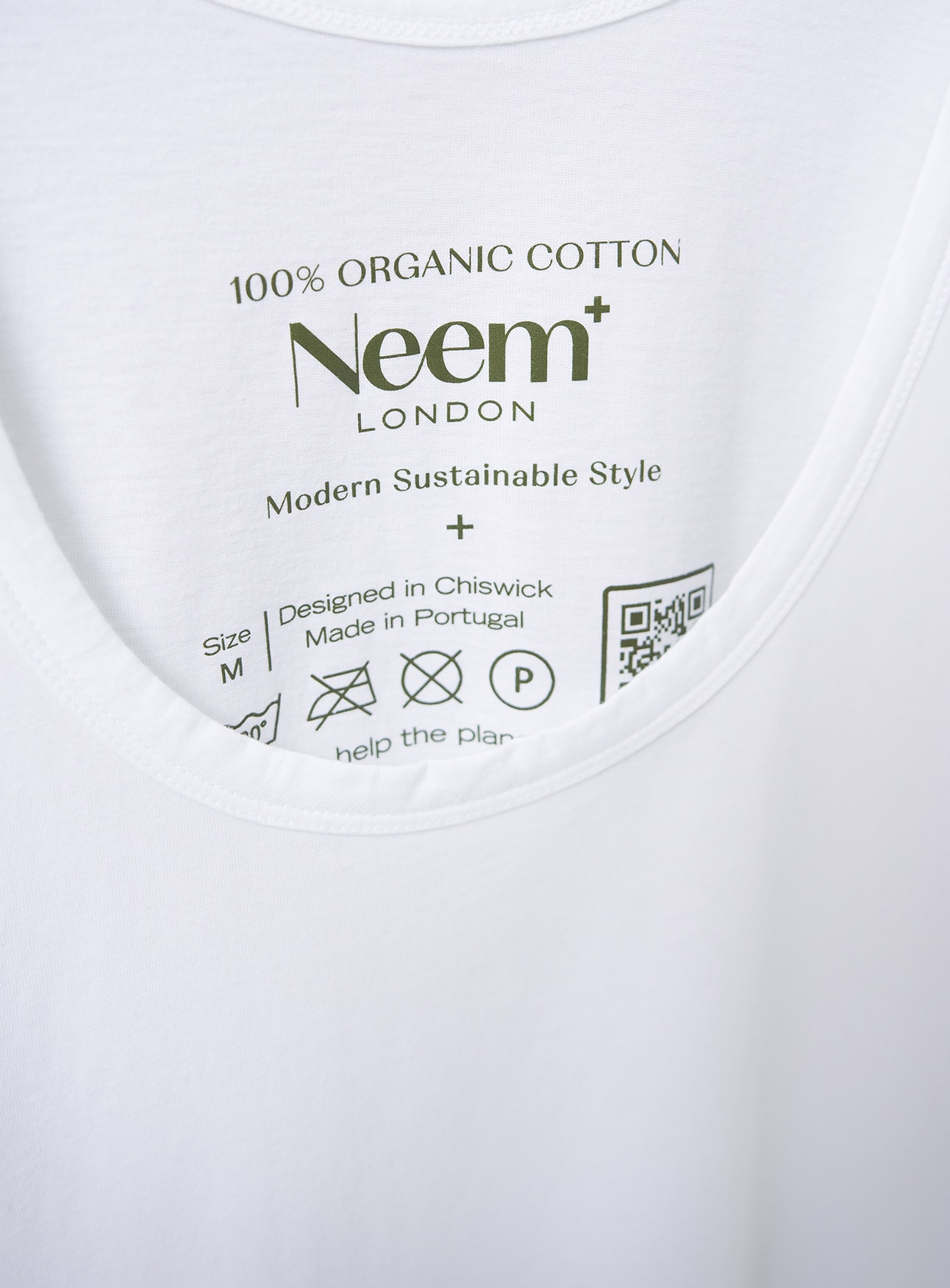
How we got here: understanding manufactured obsolescence and consumerism
Building a greener shopping experience is about more than creating environmentally conscious clothing, says Reed. In order to effectively target consumers, it’s important to take stock of how we got here — to a point where the fashion industry is responsible for almost 10% of global carbon emissions.
Social media is rife with gauche displays of wealth, like over the top shopping hauls and travel porn, where content creators flaunt how many air miles they rack up to score hard-to-find luxury goods in other countries.
Then enter the Covid-19 crisis, which Reed says only exacerbated existing overconsumption and waste in the industry. At the beginning of the pandemic, retailers scrambled to cancel and offload stock that they projected wouldn’t move. Then when consumers started to spend again, they tried to repurchase the goods from manufacturers at a discounted rate. What followed was retailers paying for and selling goods at disposable prices perpetuating a chasm of overconsumption of cheap, excess stock — all without any attention to the environmental impact of wide scale overproduction.
What we’re left with is a tidal wave of cheaply made, synthetic clothing that will only live in a consumer’s closet for a short while before inevitably ending up in a landfill.
Sometimes it seems that trying to make small changes to our day-to-day consumption can feel like applying a band-aid to a gunshot wound. But that’s no reason for apathy; on the contrary it should only create a greater sense of urgency — and understanding. Because it wasn’t always this way.
“Clothing used to be something that lived with us and lived beyond us,” says Reed. “Just sixty or seventy years ago there was much more of a repair culture where if something had a hole, you were proud of it — you [mended] it.” The introduction of manmade fibers like polyester drastically shifted things, he says, creating an entirely different type of consumer where an interest in temporal aesthetic reigns supreme. “It is important to note that only post Second World War was obsolescence built into clothing.”
In a weird way, this creates a sense of hope — that perhaps we’re not so far removed from more ethical, more sustainable ways of consumption — that the market is not irredeemable. It’s just a matter of reaching consumers in the right way. That’s a balancing act, says Reed — and critical to that, is getting the messaging just right.
There’s the implication of what words like sustainable, green, and eco-friendly mean in the world of fashion — it can read as pandering. To some, they conjure images of mauve boiled knits and a customer in velcro sandals shoes who subsists on a diet of muesli and self-aggrandizement; to others they are indicative of a much larger trend called greenwashing, where brands make small changes to how they manufacturer clothing and co-opt the language of sustainable practices to appeal to a consumer’s conscience.
While Reed says this mainstream push to market eco-friendly goods is to blame at least in part for words like sustainability losing their meaning, he also says this push to draw business by jumping on the eco-friendly bandwagon is not all bad. “The fact is, that large retailers are talking about it and they’re in the room and I think that is a big and important change that’s happened in the last ten years,” he says. “So while I might not agree with some of the greenwashing claims around — and while there may not be a deep and thorough improvement — there is some improvement at least.”
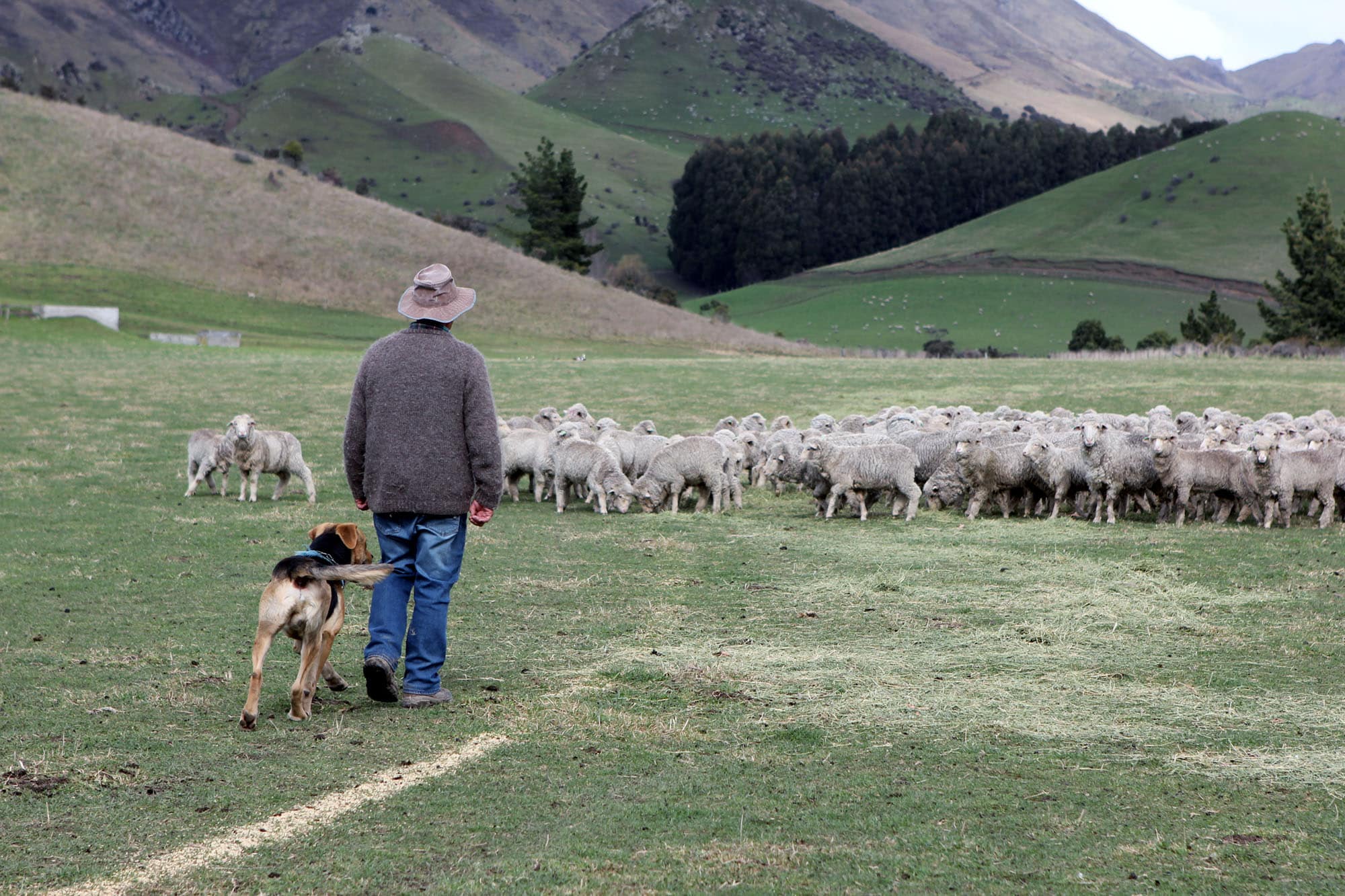
Still, the modern consumer doesn’t want to be preached to — but they want to feel good about their consumption all the same. “It can become a bit geeky,” says Reed. “Like someone who’s obsessed with wine, talking about the vineyard and the picking process whereas other people just want to drink it.” It’s the same with fashion he says. Plenty of their clientele are passionate about the minutiae of where their clothing comes from, but just as many — likely more — just want a nice simple jacket that is easy to style, easy to maintain, and feels good on.
These attributes though, are more mutually inclusive than we realize, Reed says. It’s not a coincidence that a Neem overshirt is made ethically and that the consumer enjoys wearing it.
“People have enough stress and difficulty in their life without a brand telling them how bad they are for buying something with polyester in it,” he says. “So when it comes to marketing, it’s always style that sells first, then impact. You’ve got to lead with sexy — like our campaign with John [Pearson, Mr Feelgood co-founder.] And then a byproduct of that is that people end up feeling better about what they buy.”
It’s an innovative way to approach making ethical consumption a more appealing endeavor: consumers will always want well made, stylish clothing that they feel confident in. Neem delivers that. But once they’re in the door, lessons about decarbonization and recyclable materials become an easier sell. And this is true both literally and figuratively; a client who buys a Neem shirt jacket online simply because it’s a great looking piece will learn through osmosis the values of the brand as he lives with the jacket and understands its quality. Clients who come into their brick and mortar store, he says, are often unaware of the ethos of the brand but are drawn in by the merchandise. Once they’re inside though, they chat with his knowledgeable staff and leave not only with some new clothes, but with a greater understanding of the Neem approach to fashion.
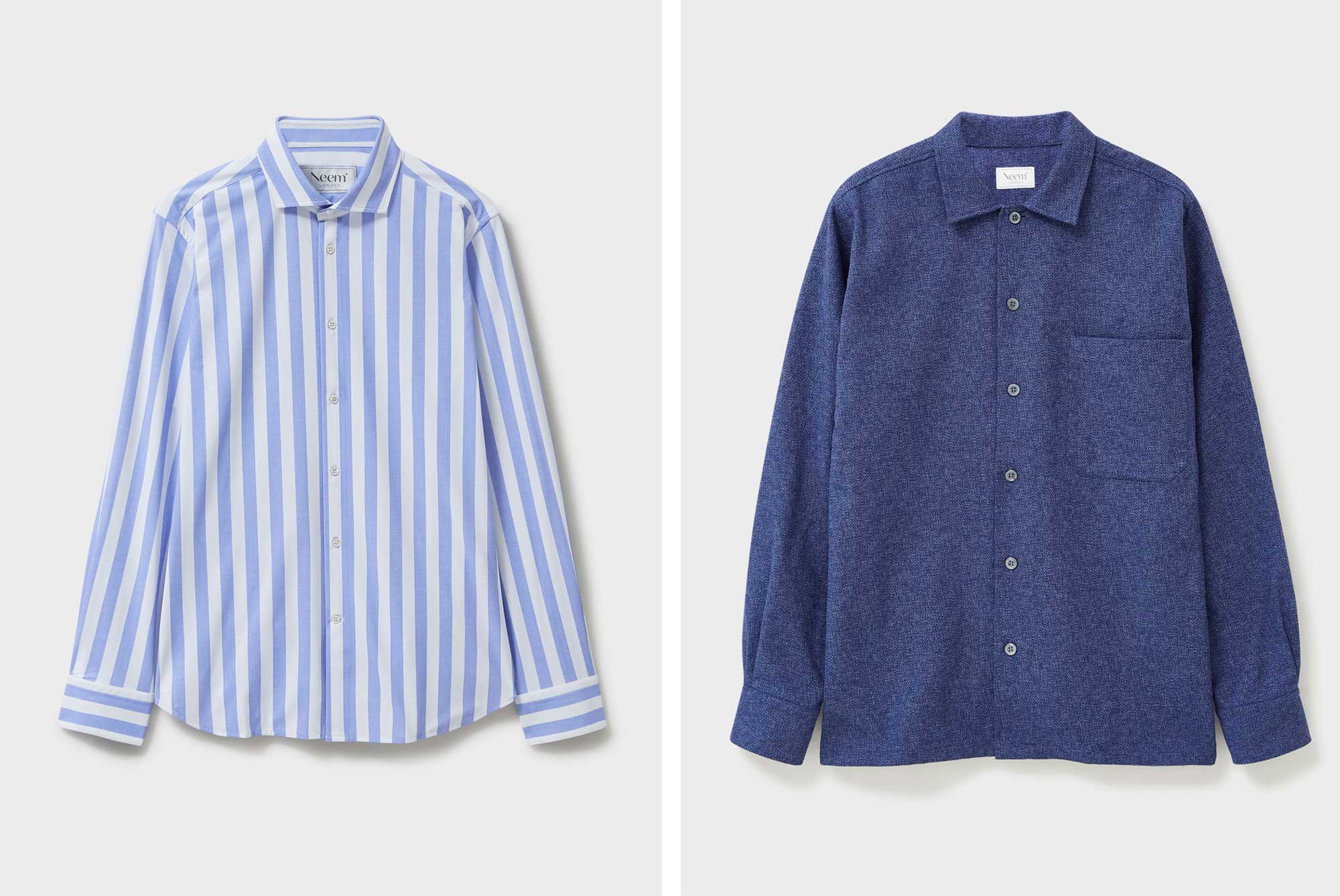
Clothing from Farm to Grave
You’ve likely heard of farm to table food. With Neem, enter: farm to grave fashion.
It’s a simple concept really. The same way it’s increasingly en vogue to know more about the food you put into your body — how it’s grown, what it’s fed — shouldn’t the same hold true for what we put on our bodies? Because like food, the clothes we wear everyday are an inescapable element of our wellbeing. Does our clothing last? Does it require too much timely maintenance? Does it look refined enough to command and communicate respect as we move through the world? Does it feel good on our bodies?
And then, once its first wearer is finished with it, how can it be recycled, reused, or resold?
Neem, with its rich selection of versatile and refined menswear staples makes a strong case for the fact that overconsumption is not only unsustainable globally — it’s inconvenient for our personal lives as well.
“Firstly what we’re trying to create is a decarbonized supply chain,” he says. “So we’re trying to show that you can create a product from the farm of every fiber to the end of life trying to decarbonize the production of the product.” That means everything from using clean energy throughout the production process to using yarns that require less washing.
“In a simple way, that means you’re making decisions based on the carbon emissions of each impact of the supply chain from the yarn to the factory to the packaging to how a consumer manages the product post purchase.”
It’s even a part of how their team built their brick and mortar store; rather than tear through their London location changing out all the existing fixtures, the team used what they could to save energy and upcycle existing materials.
“You have to hardcode it from day one,” he says. Otherwise, it’s a tantalizing easy choice to opt for cheaper materials and manufacturing processes; but with Neem, the conscious creation is in the lifeblood of the brand, inextricable from its product and team.
The fibers they choose are not only made sustainably, they allow the consumer to care for them in a sustainable way — reducing water waste with excessive washing. The materials they’re made from — cottons and wools, are recyclable and durable so that once a customer is ready to part with a good it can either be repurposed or resold, rather than filling space in a landfill. And most styles are designed to be seasonless allowing consumers to wear their Neem pieces throughout the year without a need to cycle items in and out of their closets with changing weather.
Reed says the embrace of consignment, thrift, and resale are a buoying presence in the market, especially among young people who seem to enjoy the hunt of finding a unique item at a charity shop more than clicking ‘Add to Cart’ from a fast fashion website where everyone else shops. Increasingly, resale will become the way of the future he thinks — not only in businesses specializing exclusively in consignment, but within brands themselves. Neem is slated to create their own resale program, where customers who want to move on from a piece they’ve purchased can sell it back to Neem where it is then resold at a discounted rate, or repurposed – none of which would be possible if the materials and craftsmanship put into the good weren’t built to last.
“It’s a simple adage,” he says. “Buy less, wear well.”

The fabric of Nick’s life
For Nick, it’s all in the details. Whether it’s the longevity of a fabric or the origin of a textile, his wonky attention to the smallest details is a passion passed on from his father, who worked in the fashion industry as a senior employee at a large retailer in the UK.
“He and I were very close,” he says. “And quite often on a Saturday, we would go to the stores together and ensure everything looked okay.” It’s a tradition that remained with Nick and his father as he got older; into his teens they would often tie in a rugby or football match to these father-son Saturdays. “But alongside that, there was always this sort of interest for me as to why people wore what they wore.”
He developed an attuned passion for not only the composition of what people wear, but the impact clothing can have on how a wearer is received — the nuances of tailoring, styling — details that an untrained eye might not register as impactful but that they notice all the same.
“It’s that impact that you can have on a room depending on how you dress and how you face the room with regards to your clothing,” he says. “So that might be as bold as whether your collar is up or down or whether you are wearing a bright color or as simple as whether you’ve got a trouser leg that’s slightly shorter.”
At the time, he was also attending a straight-laced all boy’s private school – so straight-laced in fact, that when he started to show an interest in fashion as a student, his parents were promptly alerted by the school. “The idea of a boy saying that he wanted to work in fashion was appalling,” he recalls.
After a brief stint at Cardiff studying history, Reed realized he knew what made him happiest and he enrolled in Leeds to study fashion, driven by three things: his father, his understanding of the import of what we wear, and finally a desire to do something contrary to all the expectations and stereotypes those school administrators foisted on him as a teen. From there, it was a steady upward trajectory for Reed, who not unlike his father, has spent most of his career as an arbiter of quality and manufacturing standards — first as a textile agent, work that took him through manufacturing hubs like India and Thailand.
After spending time working for the large retailer, Debenhams, Reed joined Charles Tyrwhitt which was, at the time, a small startup – doing a mere five million in turnover each year. Then Nick brought in his magic touch; his intuitive sense for balancing consumer needs and manufacturing quality. “I was there for over 15 years and then I left when they were doing about 220 million turnover and stores across the states and in the UK,” he says.
His work brought him all over the world to see firsthand every stage of production. “I was always interested in the detail of the actual manufacturing of the product; the supply chain,” he says. “I was always obsessed with the province of the product — for example, when I was at Charles Tyrwhitt, we were buying Peruvian cotton and I wanted to go to the cotton farms in Peru. I was always in touch with the fact that this was an agricultural product and therefore [important to] understand the farm, understand the process, understand the impact.”
It was this immersive experience that drove Reed to step away from it all and found Neem. He felt he was watching the pendulum of the industry’s priorities swing more toward style and less on construction. The aesthetic sensibility was there, he says, “but we were talking more about detail but less about how it was made, where it was made, or who it was made by.”
Neem’s mission is about bridging that gap, and about bringing transparency to the consumer and about maybe — hopefully — even inspiring them to be excited about responsible consumption in the process.
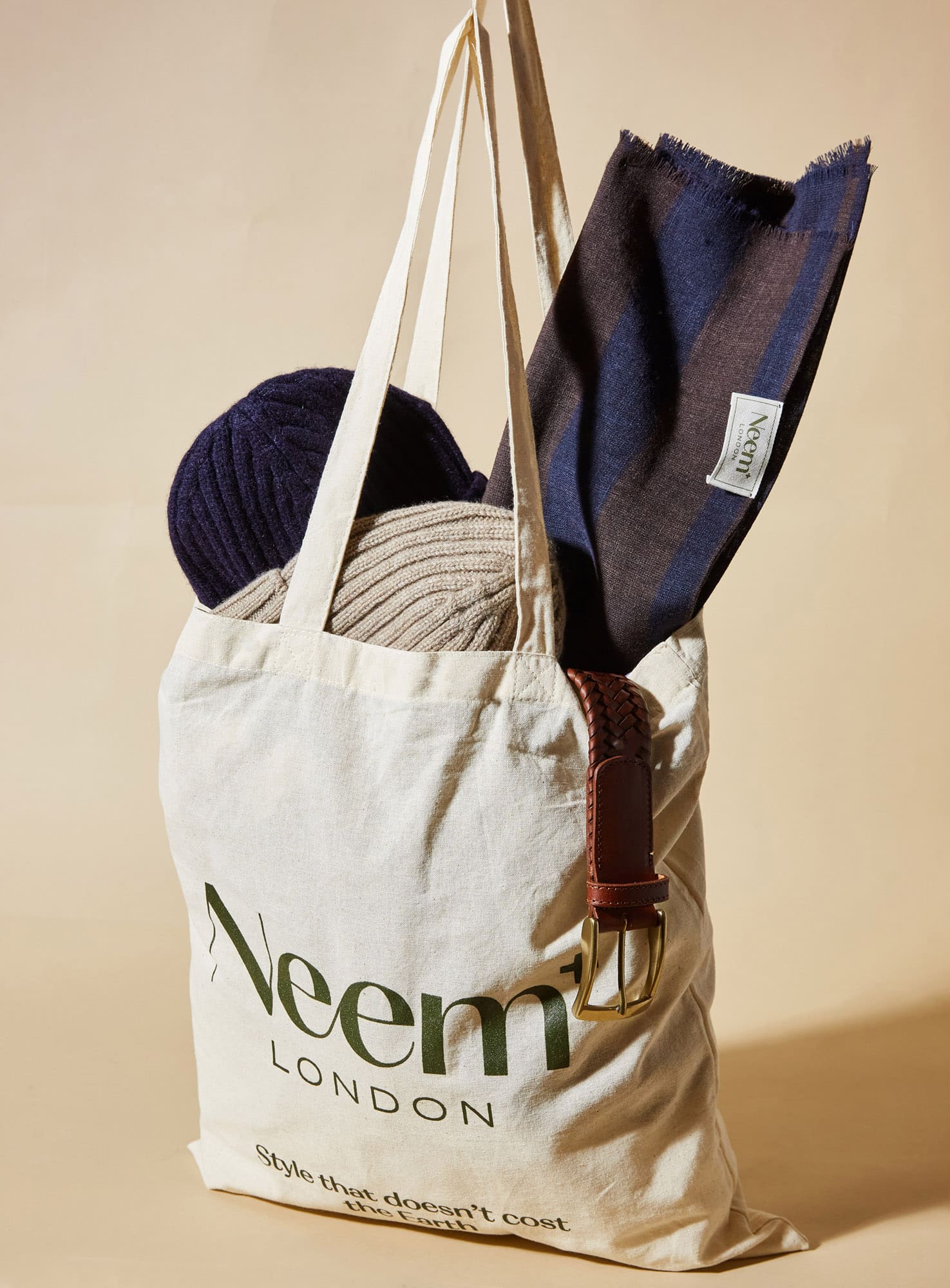
The Why of it All
In conversation, Reed maintains a sort of restrained enthusiasm for the promise of a greener future; he has a keen and unvarnished impression of the state of the environment. It’s not ideal, far from it. But he believes change can happen otherwise he wouldn’t be doing what he’s doing. How fast it can happen, if it will be enough — those are questions no one can answer, which is perhaps an even greater impetus to do our very best right now.
And as a father to three boys — Herbie, Otto, and Benny — it’s clear that Reed feels an urgency that they grow up in a world where his impact is a positive one, both as a brand, and as a dad.
“It’s about being able to live with yourself,” he says. “If you’re living around your children everyday and they’re asking, ‘What did you do today at work daddy?’ and you have to answer, ‘Oh I made some acrylic knitwear.’ And then they’ll ask, ‘What’s that made from?’ and you’ll have to say, ‘Well it’s a derivative of oil.’ And they’ll ask, ‘Will it last?’ and you’ll say, ‘No it won’t last that long.’ And then they’ll say, ‘Won’t it give off microplastics in the washing machine and then into the water system?’ And you’ll say, ‘Yes.’ And then they’ll say what? ‘Oh, ok, the jumper looks nice daddy.’ So yes, it would be quite difficult to live with yourself.”
Still, it’s not all doom and gloom at home where Reed works hard to instill a hopeful responsibility in his boys when it comes to the environment and consumption. Whether it’s sourcing a vintage guitar for a birthday present instead of buying new, or eating less red meat for dinner, he says there are ways to instill values in younger generations without scaring them or possibly worse — creating the illusion that the planet is a lost cause, giving rise to apathy.
He wants them to be engaged, realistic, but hopeful.
He wants to allow them to become invested in protecting our environment in an organic way, not because it’s forced on them or because they feel guilt or anxiety about the world, but because it’s right — and through leading by example, just like his own father did.
Check out Neem







